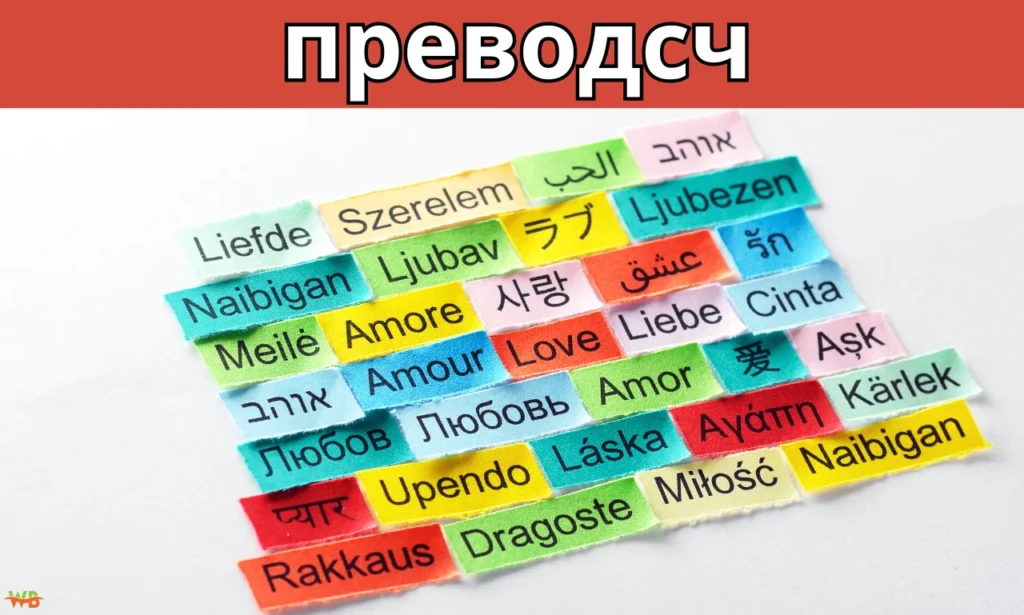Introduction to Преводсч
In a world where borders are increasingly blurred, the demand for effective communication across languages is more vital than ever. The role of a преводсч has never been so crucial in fostering understanding and collaboration among diverse cultures. Accurate translation isn’t just about converting words from one language to another; it’s about bridging gaps and creating connections. Whether it’s for international business deals or translating literature that resonates with hearts worldwide, the work of a преводсч can make all the difference. As we delve into this fascinating field, let’s explore its significance, challenges, and what the future holds for those who dedicate their careers to translation.
The importance of accurate translation in today’s globalized world
Accurate translation plays a vital role in our interconnected world. As businesses expand across borders, the need for precise communication has never been greater. A single misinterpretation can lead to misunderstandings and potentially costly mistakes.
In various sectors, from healthcare to technology, clarity is crucial. For instance, an incorrectly translated medical document could impact patient safety significantly. Similarly, technical manuals require exactness to ensure proper use of equipment.
Cultural nuances also come into play when translating content. Words often hold different meanings based on context or cultural background. Understanding these subtleties elevates the quality of translation and fosters better relationships between diverse populations.
As global commerce thrives, so does the importance of localized language services. Companies that invest in accurate translations gain a competitive edge by appealing directly to their target audiences without barriers. This not only enhances brand loyalty but also builds trust with customers around the globe.
Challenges faced by Преводсч
The role of a преводсч comes with its set of unique challenges. One significant hurdle is the complexity of languages themselves. Nuances, idioms, and cultural references can often lead to misinterpretations.
Time constraints also pose a problem. Clients may demand quick turnarounds, putting pressure on translators to deliver high-quality work under tight deadlines.
Moreover, staying updated with linguistic trends is crucial. Languages evolve constantly; new slang and terminology emerge regularly. A превращен must adapt quickly to these changes.
Additionally, dealing with specialized content can be daunting. Technical jargon in fields like medicine or law requires more than just basic knowledge—it demands expertise.
Ensuring confidentiality adds an extra layer of responsibility. Many翻译s handle sensitive material that necessitates strict privacy measures during translation processes. Each challenge tests the skills and adaptability of a преводсч daily.
Technology and its impact on translation
Technology has dramatically transformed the landscape of translation. Tools like machine translation and AI-driven software have made it easier to bridge language gaps. These innovations allow for faster turnaround times, enabling businesses to reach global audiences promptly.
However, while technology enhances efficiency, it does not replace the nuanced understanding a human translator brings. Automated systems often struggle with idiomatic expressions and cultural context, which are crucial in effective communication.
Cloud-based platforms have also revolutionized collaboration among translators worldwide. They facilitate real-time editing and feedback, ensuring consistency and accuracy across projects.
Moreover, advancements in natural language processing continue to improve machine learning capabilities. As these technologies evolve, they increasingly complement rather than compete with human translators’ skills. This dynamic creates opportunities for enhanced quality in translations while allowing professionals to focus on more complex tasks that require creativity and insight.
Emerging trends in the Преводсч industry
The Преводсч industry is witnessing several exciting trends that are reshaping how translations are approached. One notable shift is the rise of machine translation. Advanced AI algorithms are now capable of producing highly accurate translations at a rapid pace.
Another emerging trend is the growing demand for localization services. Businesses recognize that simply translating text isn’t enough; adapting content to fit cultural contexts has become essential in global markets.
Freelance translators have gained more ground as companies seek flexible solutions. This shift allows businesses to tap into specialized skills and regional expertise without committing long-term resources.
Remote collaboration tools also play a significant role, enabling teams worldwide to work together seamlessly on translation projects. These platforms foster better communication and streamline workflows, making it easier than ever to manage multi-language tasks effectively.
As these trends evolve, they’ll undoubtedly influence best practices within the Преводсч sector.
Skills and qualifications required for a successful career as a Преводсч
A successful career as a преводсч demands a unique blend of skills and qualifications. Language proficiency is paramount. Understanding nuances, idioms, and cultural references in both source and target languages is essential.
Equally important are strong research skills. A переводсч often encounters specialized terminology that requires thorough investigation to ensure accuracy and context.
Attention to detail cannot be overlooked. Even minor errors can lead to misunderstandings or miscommunications, making precision vital.
Furthermore, familiarity with translation tools enhances efficiency. Software like CAT tools streamlines the process while maintaining consistency across projects.
Effective communication skills play a crucial role. This includes not just translating text but also conveying messages clearly between diverse audiences. An adaptable mindset helps navigate different industries and subject matters seamlessly. Each of these qualities contributes significantly to the success of a переводсч in today’s dynamic landscape.
Conclusion: The evolving role of a Преводсч and its significance in the future
The role of a преводсч is continuously evolving. As globalization intensifies, the demand for translation services becomes more critical. Accurate translations ensure clear communication across cultures and industries. This importance cannot be overstated in today’s interconnected world.
Emerging technologies are reshaping how translators work. AI and machine learning tools assist in streamlining processes but do not replace the human touch essential for nuanced understanding. The blend of technology with traditional skills offers exciting opportunities for both seasoned professionals and newcomers to the field.
As trends shift towards remote collaborations and specialized fields like legal or medical translation, adaptability will become increasingly vital. Continuous learning and developing new competencies will help преводсч stay relevant amid these changes.
The future holds immense potential for those in this profession. With expanding global markets, skilled переводчики will play an integral part in bridging language gaps, fostering international relationships, and ensuring that important messages resonate across diverse audiences.
Embracing these dynamics positions преводсч not just as a career but as a pivotal element driving meaningful connections worldwide.

















